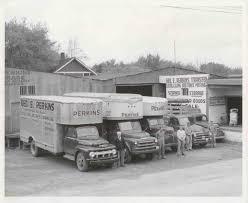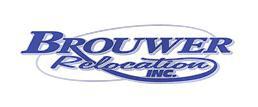South Dakota Movers Top Rated
(888) 787-781325 Movers in South Dakota
Page 1/2
Movers In South Dakota That Stand Out
Want to read interstate South Dakota moving reviews? You're in the right place. Moving Authority has a list of South Dakota interstate movers from which you can select a state to state moving company to get the job done. If you aren't looking for a cross country mover, don't worry. It's easy to find the best South Dakota moving companies by comparing local moving company reviews. A free moving quote will unlock the best South Dakota priced movers with discount relocation rates. For customers moving within South Dakota, get a South Dakota movers cost estimate today. Keep reading; you can find more than just the best South Dakota movers. Moving Authority is your connection to moving tips, relocation guides, and checklists to take the worry about of your move.
South Dakota long distance movers are much more valuable than you may think. Regardless of whether you want to move your furniture or find the best car transport in South Dakota, they can do everything you need. But how can you find the top American moving company to get the job done? By studying South Dakota moving company reviews and collecting free moving estimates, you're doing yourself a favor. When you know what others have experienced and you have a solid price point, the choice is clear. Moving Authority gives you access to a moving cost estimate for self-service movers as well as full-service movers. You're not alone in your decision-making process. We're here to make your move to South Dakota easier than you thought it could be.
MOVE YOUR POOL TABLE WITHOUT DAMAGING IT — Or You
- Pool tables are extremely heavy and require a lot of attention during a move.
- Without the proper tools, it can be severely harmful to attempt to move the pool table.
- You should NEVER attempt to move a pool table alone.
- This is a task best left to the experts, for the sake of the pool table AND its owner.
- This advice doesn't only apply to pool tables! Any heavy furniture item must be treated delicately in order to reduce the risk of damage and injury.
4 Things No One Tells You About Moving to South Dakota
- Your paycheck will be larger! Thanks to SD’s lack of income tax, you get more money in the bank each month.
- The weather is extreme. We’re all familiar with the brutal South Dakota winters, but humidity and temps close to 100ºF in the summer? That’s certainly a surprise!
- There is a place called “The Banana Belt,” and it holds at a cool temperature with little rain or snow, year-round.
- Cowboy culture is everywhere. Bucking broncos and calf roping are considered sports, and everyone here loves the cowboy life.
4 REASONS YOU SHOULD NEVER PAY FOR MOVING BOXES
- When fruits get shipped to the grocery store, they come in sturdy boxes. In fact, apples are shipped with corrugated cardboard inserts between each layer of apples to keep them from bruising. These are perfect for moving delicate items!
- When bottles of wine, beer, and liquor are shipped to bars and liquor stores, these are kept intact. Why not your fragile items in the same type of boxes?
- The boxes used to ship reams of printer paper to office spaces come with handles as well as lids, which make them ideal for multipurpose moving boxes.
- So, how do you get these boxes for free? Call ahead, ask nicely, and don't forget to say "please" and "thank you."
- Relocating to South Dakota just got much cheaper!
- Related: Where to Buy Moving Boxes and Where to Buy Packing Paper
5 Shocking Facts About Mt. Rushmore You Won’t Believe
- The 400 men who worked on the culture weren’t artists, but miners looking for gold.
- The bulk of the sculpting was actually done with dynamite, and then carving was done to refine the details on the faces of the Founding Fathers.
- Two years into constructing the face of Thomas Jefferson, the rock was deemed inadequate and unsafe to continue, and the face was blown up with dynamite. The crew began again.
- The monument took over 14 years to complete, but only 6 were said to have been spent actually constructing; the other 8.5 years were spent waiting for funds to be replenished and on weather-related setbacks.
Movers By City in South Dakota
Do you know?

- A moving company, removalist, or van line are all companies that help people as well as other businesses to move their goods from one place to another. With many inclusive services for relocation like packing, loading, moving, unloading, unpacking and arranging of items can all be taken care of for you. Some services may include cleaning the place and have warehousing facilities.
- According to the U.S. Census Bureau, 40 million United States citizens have moved annually over the last decade. Of those people who have moved in the United States, 84.5% of them have moved within their own state, 12.5% have moved to another state, and 2.3% have moved to another country.
- In the United States and Canada, the cost for long-distance moves is generally determined by a few factors. The first is the weight of the items to be moved and the distance it will go. Cost is also based on how quickly the items are to be moved, as well as the time of the year or month which the move occurs. In the United Kingdom and Australia, it's quite different. They base price on the volume of the items as opposed to their weight. Keep in mind some movers may offer flat rate pricing.
- Many people are familiar with this type of moving, using truck rental services, or borrowing similar hardware, is known as DIY moving. Whoever is renting a truck or trailer large enough to carry their household goods may obtain moving equipment if necessary. Equipment may be items such as dollies, furniture pads, and cargo belts to protect furniture and to ease the moving process.
- As most people have experienced, moving does involve having the appropriate materials. Some materials you might find at home or may be more resourceful to save money while others may choose to pay for everything. Either way materials such as boxes, paper, tape, and bubble wrap with which to pack box-able and/or protect fragile household goods. It is also used to consolidate the carrying and stacking on moving day. Self-service moving companies offer another viable option. It involves the person moving buying a space on one or more trailers or shipping containers. These containers are then professionally driven to the new location.
- There many reasons for moving, each one with a unique and specific reason as to why. Relocation services, employee relocation, or workforce mobility can create a range of processes. This process of transferring employees, their families, and/or entire departments of a business to a new location can be difficult. Like some types of employee benefits, these matters are dealt with by human resources specialists within a corporation.














